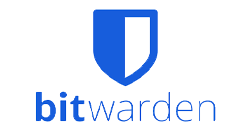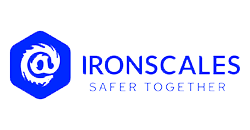October is Cybersecurity Awareness Month, and at IT Horizons, we’re here to help you and your team navigate the digital world safely.
While cyber threats continue to evolve, there are things you can do to secure your personal and professional information. Here are seven simple steps:
1. Use Strong Passwords

Don’t use the same password for all your logins. Create complex passwords using letters, numbers, and symbols. Managing multiple passwords? Try using a password manager for increased security and convenience.
We’ve found that BitWarden is a good, user-friendly option for managing passwords within an organization. You can customize it to provide just enough access for those who need it, and nothing more.
Going passwordless is becoming a strong up and coming authentication method. It requires enrolling a PIN and matching your biometric (fingerprint) with your Windows devices using Windows Hello for Business. For all other devices you would use a YubiKey (a hardware USB token) you keep with you. When it’s connected, you tap it, and, combined with your PIN it will sign you in.
2. Enable Multi-Factor Authentication (MFA)
Enabling MFA adds an extra layer of security to your accounts. Providing two or more verification factors makes it harder for unauthorized users to breach your accounts.
For example, you can set up a text verification that sends a passcode to your phone, requiring a code to log into a site. You can also use an authenticator that gives a login code.
While an additional login step can be annoying, the enhanced protection of MFA is highly valuable—and much less work than dealing with a security breach!
3. Recognize and Report Phishing Attempts

Always be on the lookout for suspicious emails and messages. Make sure to verify the email sender’s address and avoid clicking on unfamiliar links.
There are products that add email security, impersonation detection, and better filtering than Microsoft’s out of the box solution. They also provide reporting tools for phishing that will quarantine and lock down emails companywide if one person reports it. IT Horizons sells this in a product called IRONSCALES.
We also offer phishing and email related security awareness training as part of employee onboarding or on a regular, annual basis.
With the increasing use of AI, phishing attacks are becoming more advanced, but staying vigilant can protect you.
If you’re unsure about an email or message, check with your team, especially if it mentions a team member.
4. Keep Your Software Updated
Update your software and devices regularly.
Those update notifications might seem inconvenient, but keeping things current helps keep your information secure. So go ahead and run that update!
5. Protect Your Devices
Use reputable antivirus software and enable the lock feature on all your mobile devices. By setting up a strong passcode or biometric lock (like fingerprint or Face ID), you can prevent unauthorized access to your device if it’s lost or stolen.
6. Be Cautious with AI Tools
AI tools can be incredibly useful, but using them safely is important. Double-check AI-generated content and only use approved tools from your trusted IT organization. By practicing caution in your AI utilization, you can enjoy its advantages while safeguarding yourself.
7. Watch Out for Social Media Influences
Social media platforms can spread misinformation or extreme views that fuel fear and division. Rely on reputable sources for your information and think critically about posts that provoke strong emotional reactions.
Following these steps will improve your cybersecurity and help protect your data. Developing tech skills is vital to ensure safety as our digital and physical realms continue to merge.
Have you implemented any of these steps already?
Learn more:
Our support team is here to address any cyber security inquiries from our clients. If you’re not an IT Horizons Managed Services client yet, let’s talk!
This email address is being protected from spambots. You need JavaScript enabled to view it.



